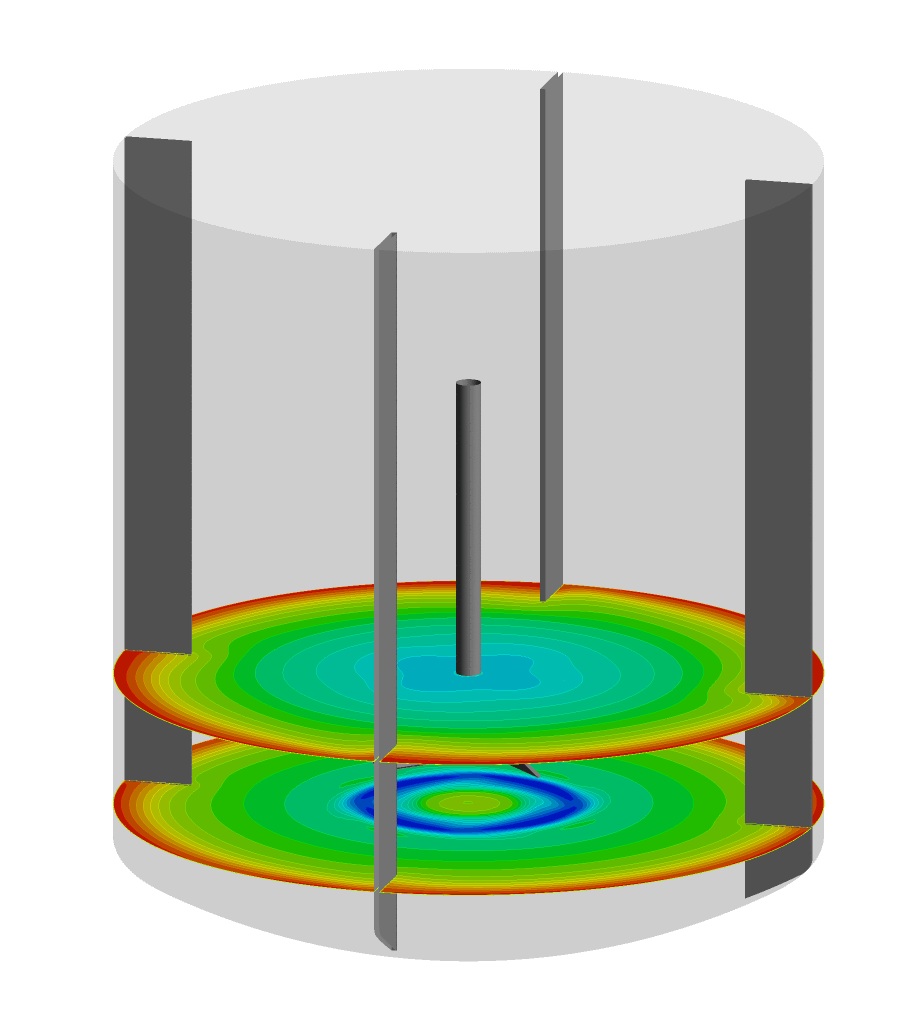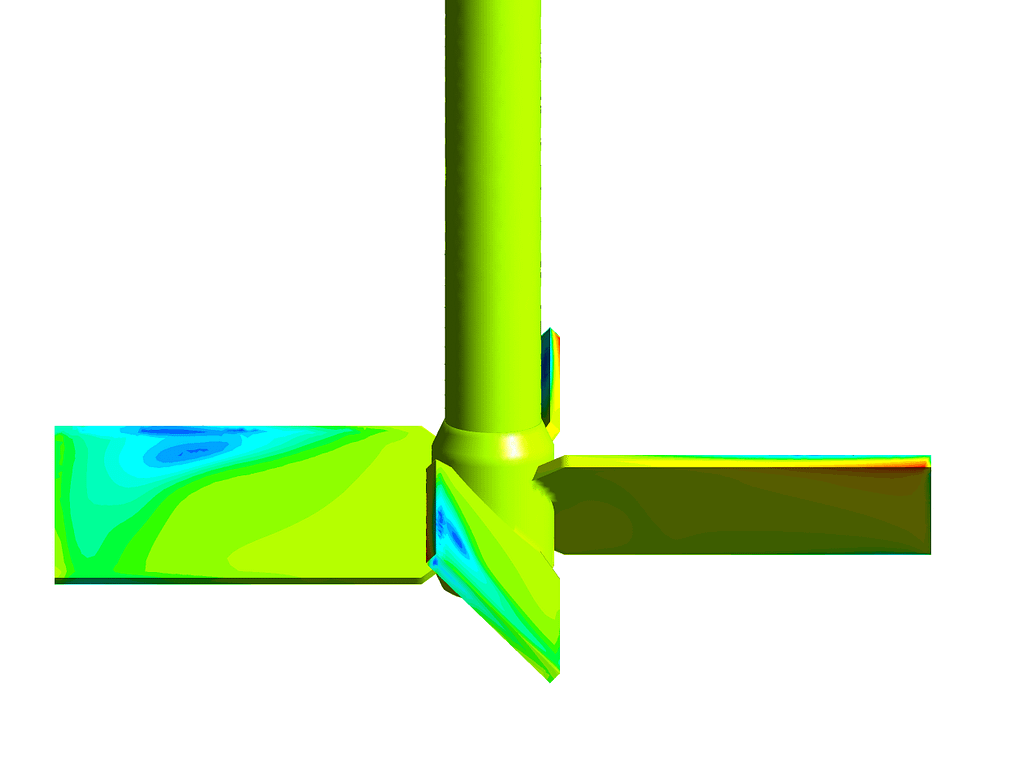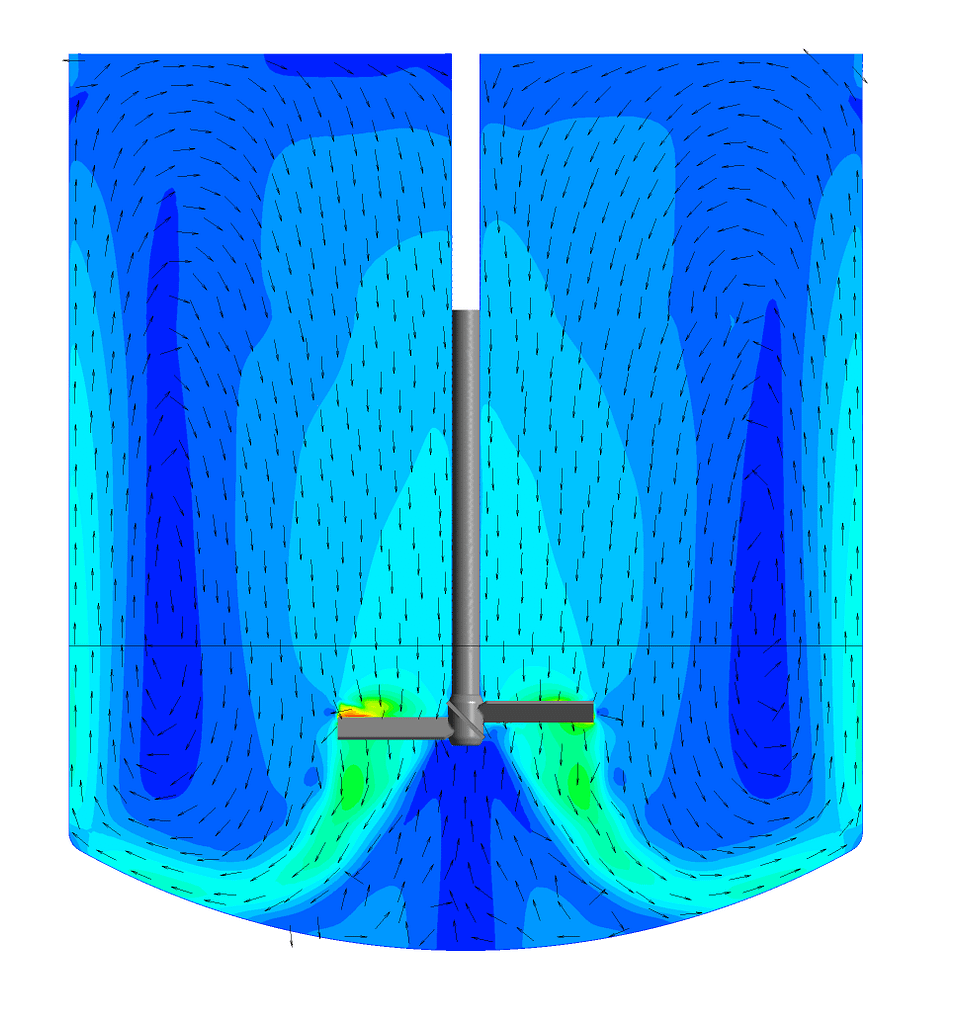Continuous Stirred Tank Reactor (CSTR)



Another important application of CFD for CSTRs is the analysis of heat and mass transfer processes. These simulations can help to predict the temperature and concentration profiles within the reactor, which is crucial for controlling the reaction kinetics and ensuring the safety of the reactor.
At Fluent-ES, we have simulated CSTR with different configurations and analyzed the effects of changes in the reactor geometry, the properties of the fluid, and the mixing conditions on the heat and mass transfer processes within the control volume.
Overall, CFD is a powerful tool that can help you to optimize the design of CSTRs and predict their performance under different operating conditions. Using Fluent-ES CFD expertise, our customers have gained improved mixing, heat transfer, reduced energy consumption with ensured safety and performance of the reactor.
